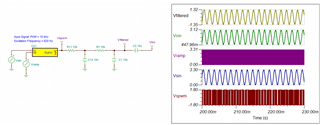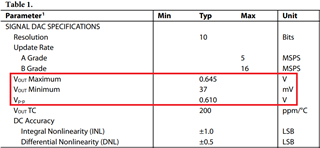Other Parts Discussed in Thread: ALM2402F-Q1, ALM2402-Q1, ALM2403-Q1, OPA593, OPA564, TINA-TI, OPA564-Q1
Tool/software:
Hello.
I'm beginning a project that is a little different for me.
I will show the details I can.
Input: maximum 1Vpp (+500mV peak, -500mV peak) AC sine voltage wave, frequency 6Hz to 620Hz.
Output: 5mA per each 1mV at the input, the load is a coil, the inductance will be something between 1mH and 2.2mH, 2.2mH more probably.
When Vin instantaneous is +500mV, the instantaneous current on the coil is 2500mA, and when Vin instantaneous is -500mV, the instantaneous current at the coil is also 2500mA, but with the current flowing in the opposite direction (AC). Iout / Vin has a relation of 5 (5mA/mV), but the relation also can be between 4.5 and 5.
Without DC current offset on the coil, if possible.
It's a voltage to current converter, but it's AC.
The purpose is to apply a sine current in the coil for the generation of adjustable amplitude/frequency electromagnetic fields in the frequency range of 6Hz to 620Hz, although the coil was not chosen yet, probably it will have a custom design. I can't go far in the explanation due to the NDA of the project.
I would like to know if Texas Instruments has some documents related to this, that could help on this. Or if some related material can be recommended. And yes, I'm looking for circuits that can make this, perhaps using a power operational amplifier like the LM675.
Regards.





